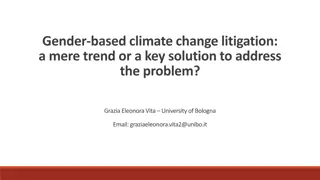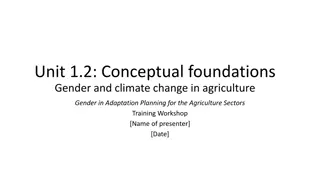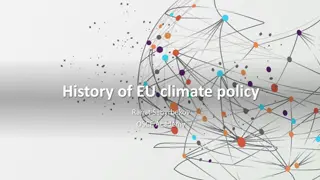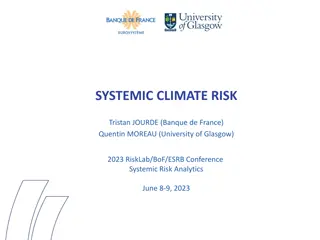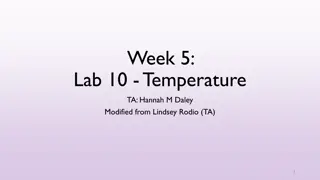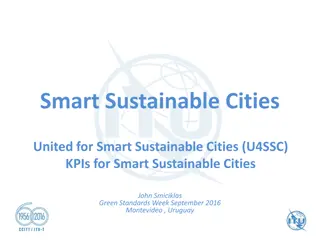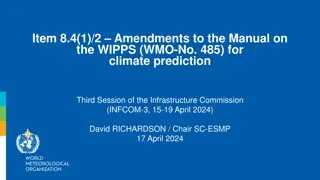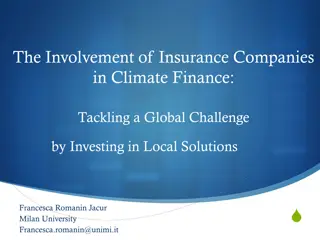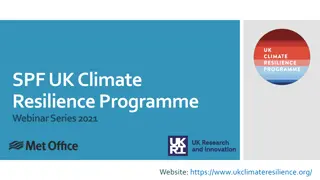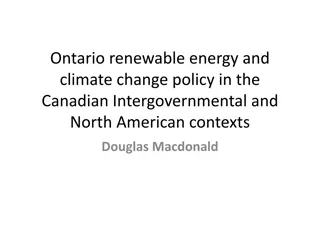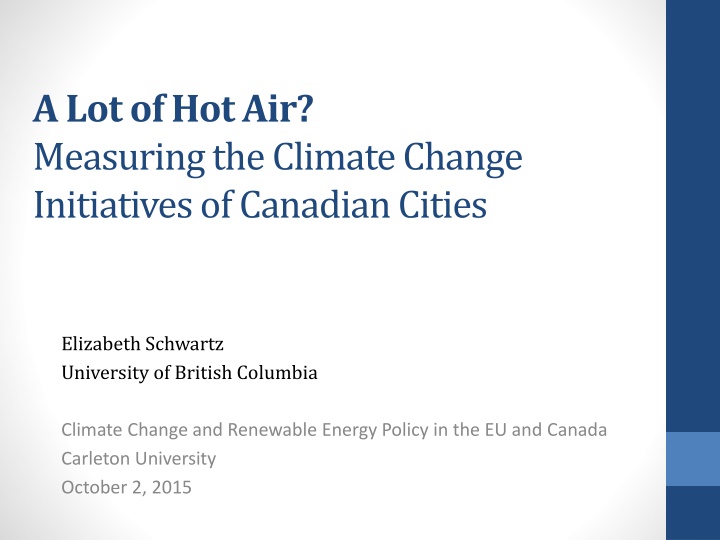
Measuring Climate Policy Initiatives in Canadian Cities
This study delves into the climate change initiatives undertaken by Canadian cities, exploring the dimensions of likely impact and methods of measuring the effectiveness of climate policies. It analyzes the setting of emission reduction targets, participation in intergovernmental networks, creation of action plans, adoption of eco-friendly practices, and more.
Download Presentation

Please find below an Image/Link to download the presentation.
The content on the website is provided AS IS for your information and personal use only. It may not be sold, licensed, or shared on other websites without obtaining consent from the author. If you encounter any issues during the download, it is possible that the publisher has removed the file from their server.
You are allowed to download the files provided on this website for personal or commercial use, subject to the condition that they are used lawfully. All files are the property of their respective owners.
The content on the website is provided AS IS for your information and personal use only. It may not be sold, licensed, or shared on other websites without obtaining consent from the author.
E N D
Presentation Transcript
A Lot of Hot Air? Measuring the Climate Change Initiatives of Canadian Cities Elizabeth Schwartz University of British Columbia Climate Change and Renewable Energy Policy in the EU and Canada Carleton University October 2, 2015
What is Climate Policy? Setting GHG emission reduction targets? Participating in intergovernmental networks such as Partners for Climate Protection? Creating a Climate Change Action plan? Buying hybrid vehicles for the city fleet? Asking people to turn out their lights for Earth Hour? Requiring new condo towers to be built to LEED Gold standards?
Dimensions of Likely Impact Ambition Settings, levels Scope Community or corporate emissions Coerciveness Policy instrument (Information/Voluntary Action < Subsidies < Taxes/Regulation)
Measuring Climate Policy Deductive Inventories Advantages: simple; reliable; relatively easy data collection Disadvantages: unweighted; may overlook policies not anticipated in advance Inductive Inventories Advantages: simple; sensitive to context Disadvantages: unweighted; may overlook policies not explicitly labeled as relating to climate change
Starting Deductively Policy Area Transportation Specific GHG reducing activities Cycling Walking Transit Cars Goods movement Roads General Fleet Zoning Green roofs Building standards (e.g., LEED certification) Brownfield redevelopment Site-specific projects Other Landfill gas capture Electricity conservation Electricity generation Other Green business promotion Procurement Buildings and Planning Waste Energy Other
Adding More Detail Scope Coerciveness (Community) Service Provision / Subsidy 12 8 7 6 6 6 5 6 4 # of Actions Voluntary/ Information Tax/ City Corporate Community Regulation Toronto Vancouver Montreal Edmonton Calgary Ottawa Winnipeg Hamilton Mississauga Qu bec City Brampton 25 23 20 20 20 17 16 15 13 5 7 8 5 7 4 4 5 4 21 16 12 15 13 13 12 10 9 5 5 3 8 7 6 6 4 4 3 3 2 1 0 1 1 1 1 10 6 5 1 3 1 9 3 6 2 3 1 Sources: Official websites of the municipalities, 2011
Looking to the Future What we measure matters Targets and actions are not equivalent All actions are not equal Cities have a lot of potential In Canada it has largely not been realized This doesn t mean that all is lost But there is a lot of work to be done
Elizabeth Schwartz Department of Political Science University of British Columbia bschwar@mail.ubc.ca



